What Do Striped Surgeonfish Eat? A Complete Guide to Their Diet
This post may contain affiliate links.
The striped surgeonfish (Acanthurus lineatus), also known as the lined surgeonfish or clown tang, is one of the most visually striking reef dwellers in the Indo-Pacific region. With their vibrant yellow bodies adorned with electric blue horizontal stripes, these fish are not just beautiful to observe but also fascinating in their dietary habits. Understanding what striped surgeonfish eat is crucial for appreciating their ecological role and properly caring for them in captivity. This comprehensive guide explores their natural feeding patterns, nutritional requirements, and the important role they play in maintaining healthy coral reef ecosystems.
Natural Diet of Striped Surgeonfish in the Wild
Striped surgeonfish are primarily herbivores, with a specialized diet focused on various types of marine algae. Their feeding habits have evolved specifically to help maintain the delicate balance of coral reef ecosystems.
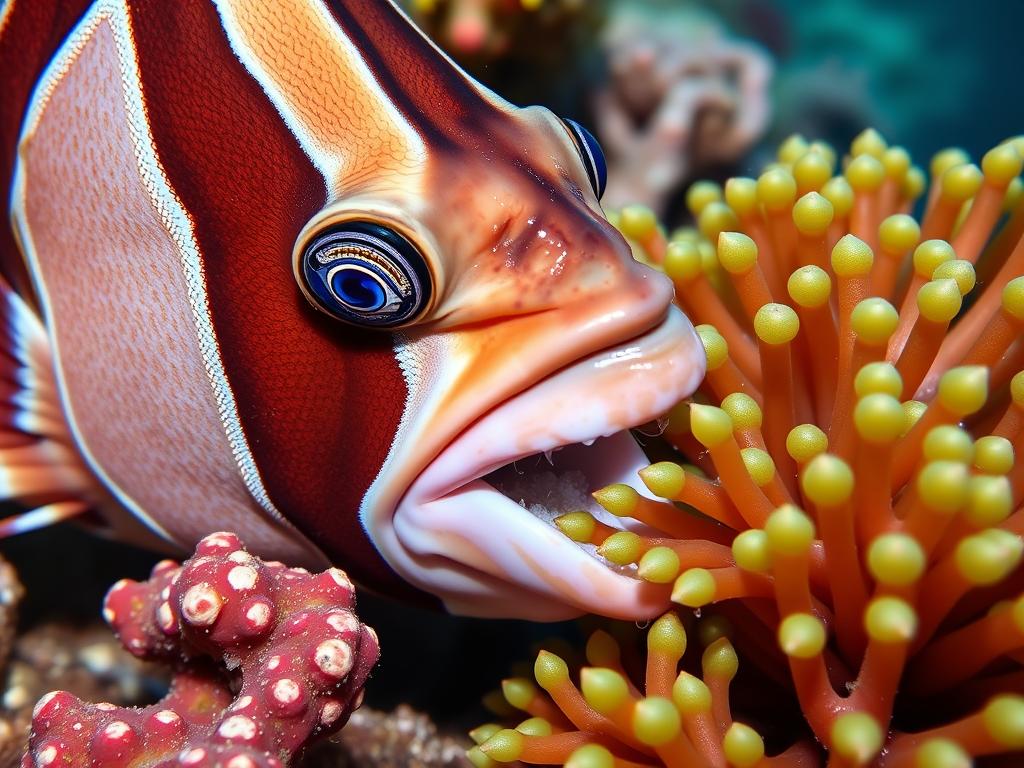
Primary Food Sources
- Filamentous algae (thread-like algae growing on reef surfaces)
- Rhodophytes (red algae) which provide essential nutrients
- Chlorophytes (green algae) that grow abundantly in shallow reef areas
- Turf algae (short, dense algal communities growing on hard surfaces)
- Benthic diatoms (microscopic algae) that coat reef substrates
Research has shown that striped surgeonfish are selective feeders, often targeting specific types of algae based on nutritional content and digestibility. They have specialized teeth with denticulate edges (tooth-like projections) perfectly adapted for scraping algae from hard surfaces. Their thick-walled stomach acts similar to a gizzard, helping grind ingested material when sand is consumed during feeding.
“Lined surgeonfish spend about 80% of their day eating and have been spotted taking food from neighboring territories.” – Animal Diversity Web
Unlike some other surgeonfish species, Acanthurus lineatus rarely consumes animal matter, though occasional small crustaceans may be ingested incidentally while grazing. Their digestive system is specifically adapted for processing plant material, with high levels of short-chained fatty acids and relatively low levels of protein amino acids.
Feeding Behavior and Patterns
The feeding behavior of striped surgeonfish is as fascinating as their diet. These fish display complex territorial and social behaviors centered around their feeding grounds.
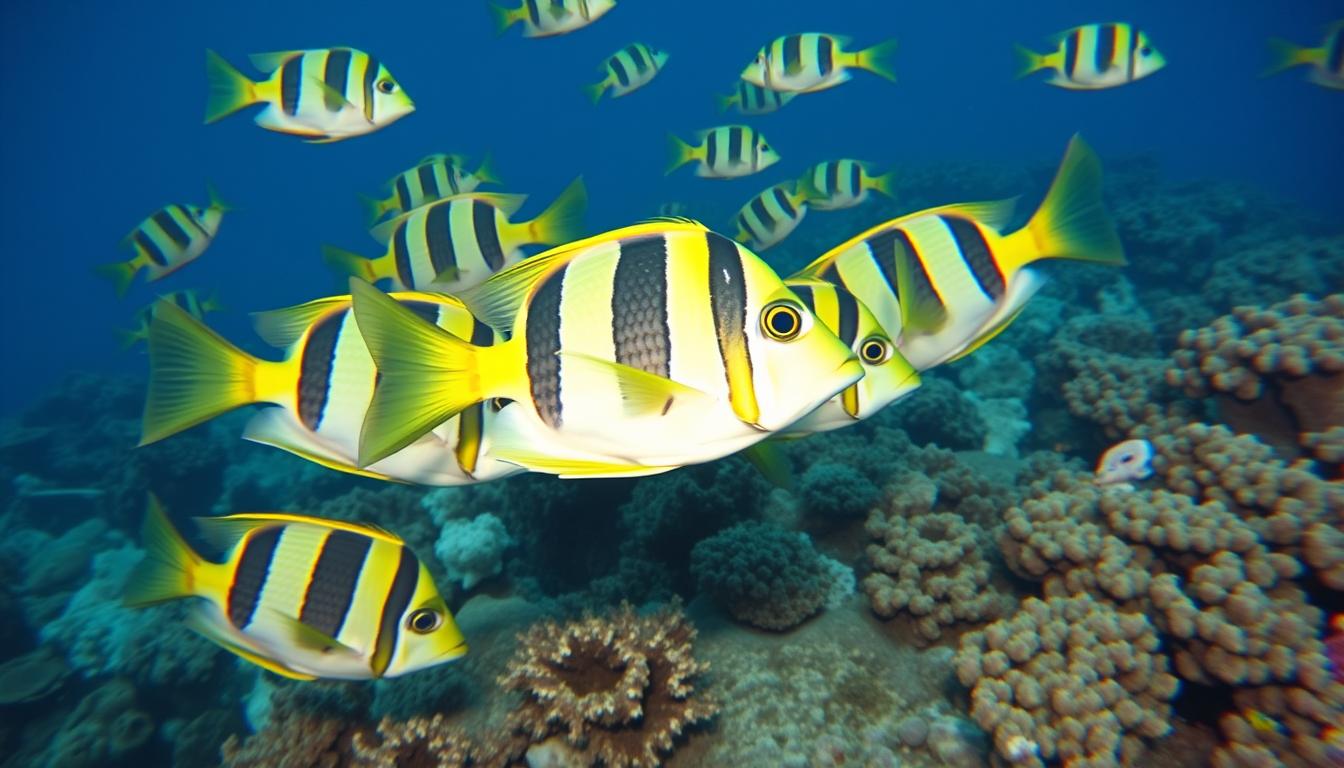
Territorial Feeding Habits
Striped surgeonfish are highly territorial, with individuals establishing and defending specific feeding areas on the reef. Their territories typically range from 4 to 12.5 square meters in size. These territories are visually determined and vigorously defended against other herbivorous fish that might compete for the same algal resources.
When other fish enter their territory, striped surgeonfish display aggressive behaviors including:
- Circling and parallel swimming to intimidate intruders
- Color intensification (their body colors become brighter)
- Changing caudal fin color from black to white as a warning signal
- Chasing competitors away from their feeding grounds
Daily Feeding Schedule
These fish are diurnal feeders, meaning they actively feed during daylight hours. They typically follow a consistent pattern:
- Morning hours: Most active feeding period, especially in some locations
- Midday: Continued grazing with occasional rest periods
- Afternoon: Secondary feeding peak in some populations (like those in the Great Barrier Reef)
- Night: Retreat to shelter in reef crevices, no feeding activity
Interestingly, water conditions affect their feeding behavior. During high tide, they become more aggressive in defending their territories. Conversely, high water turbulence causes them to feed less, temporarily abandon their territories, and display reduced aggression.
Juvenile vs. Adult Dietary Differences
The dietary preferences and feeding behaviors of striped surgeonfish evolve as they grow from juveniles to adults, reflecting changes in their habitat, nutritional needs, and social structure.
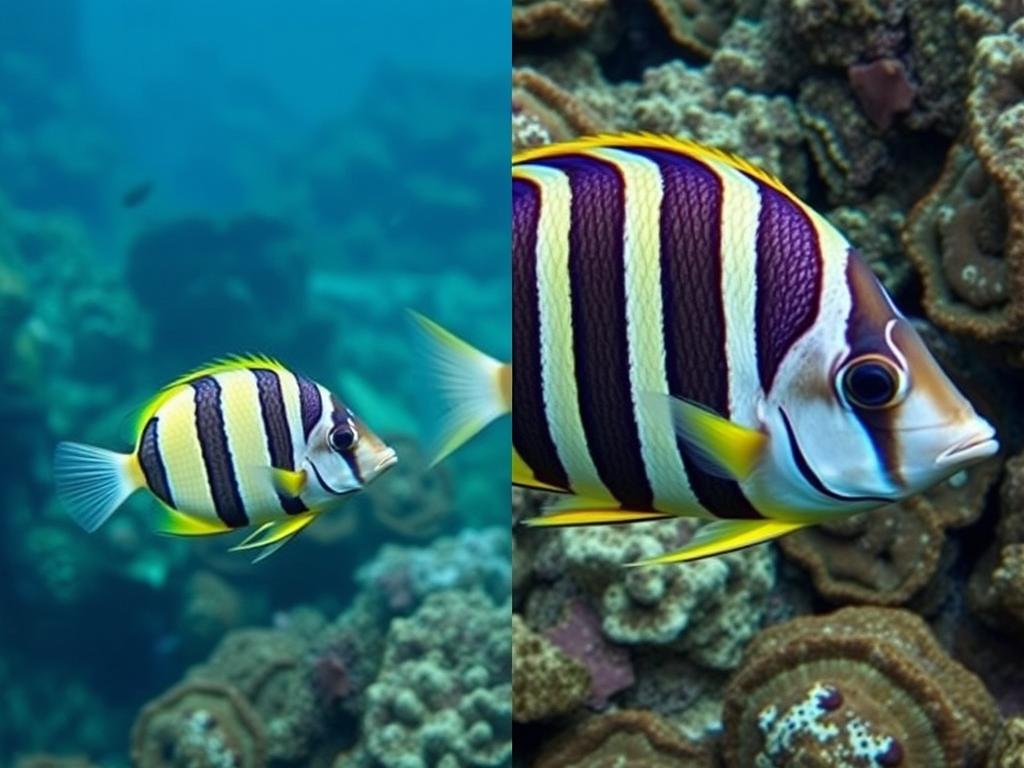
Juvenile Diet and Behavior
Juvenile striped surgeonfish (2.7-3.2 cm in length) typically inhabit different areas than adults:
- Primarily found in shallow pelagic waters during their larval stage (first 39.5 days)
- Feed on smaller, softer algae varieties and phytoplankton
- Less territorial than adults, often seen individually rather than in groups
- More shy and difficult to approach
- May supplement their diet with zooplankton during early development
Adult Diet and Behavior
As they mature (reaching 18-38 cm), striped surgeonfish develop more specialized feeding habits:
- Migrate to deeper reef areas (1-10 meters depth, typically 5-8 meters)
- Develop stronger preferences for specific algae types
- Establish and vigorously defend feeding territories
- Form social groups with dominant males and several females
- Become highly selective about what they eat, showing clear preferences
This dietary transition coincides with their rapid growth phase. Striped surgeonfish experience accelerated growth during their first 3-4 years, reaching close to maximum adult size within the first 10% of their lifespan, which can extend to 30-45 years in the wild.
Ecological Role in Coral Reef Ecosystems
Striped surgeonfish play a crucial role in maintaining the health and balance of coral reef ecosystems through their feeding activities.
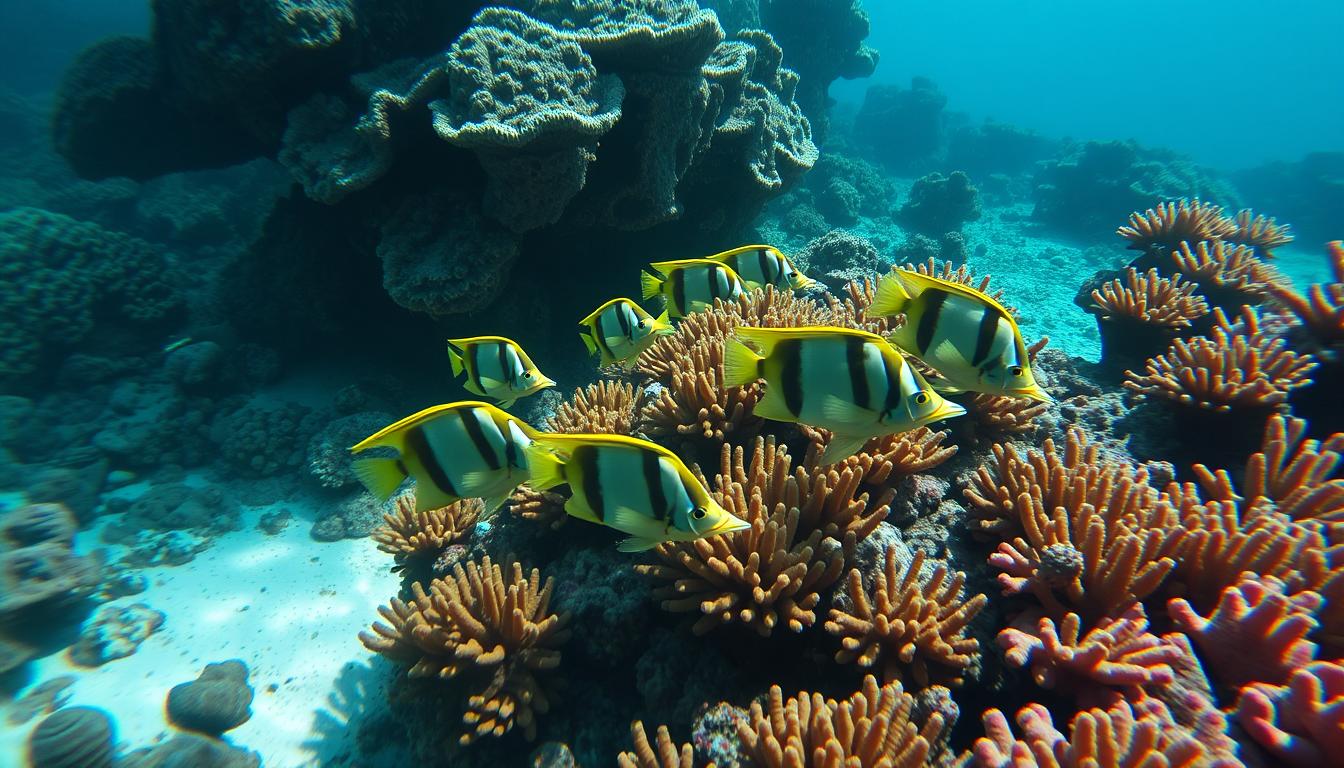
Algae Control and Coral Health
As dedicated herbivores, striped surgeonfish provide several ecological benefits:
- Prevent algal overgrowth that could smother and kill coral polyps
- Create space for new coral settlement by clearing algae from reef surfaces
- Promote the growth of beneficial red algae through selective feeding
- Help maintain biodiversity by preventing any single algae species from dominating
- Contribute to nutrient cycling within the reef ecosystem
Their constant grazing activity helps maintain the delicate balance between algae and coral, which is essential for reef health. Without herbivorous fish like the striped surgeonfish, many reefs would quickly become dominated by fast-growing algae that outcompete coral for space and light.
Ecological Impact: A single adult striped surgeonfish can graze approximately 150,000 bites of algae per day, clearing several square meters of reef surface.
This species is particularly valuable in reef ecosystems because they inhabit shallow waters (1-3 meters typically) where algal growth is often most vigorous due to abundant sunlight. Their presence in these zones helps maintain optimal conditions for coral growth and reproduction.
Feeding Striped Surgeonfish in Captivity
Maintaining proper nutrition for striped surgeonfish in aquarium settings requires careful attention to their specialized dietary needs.
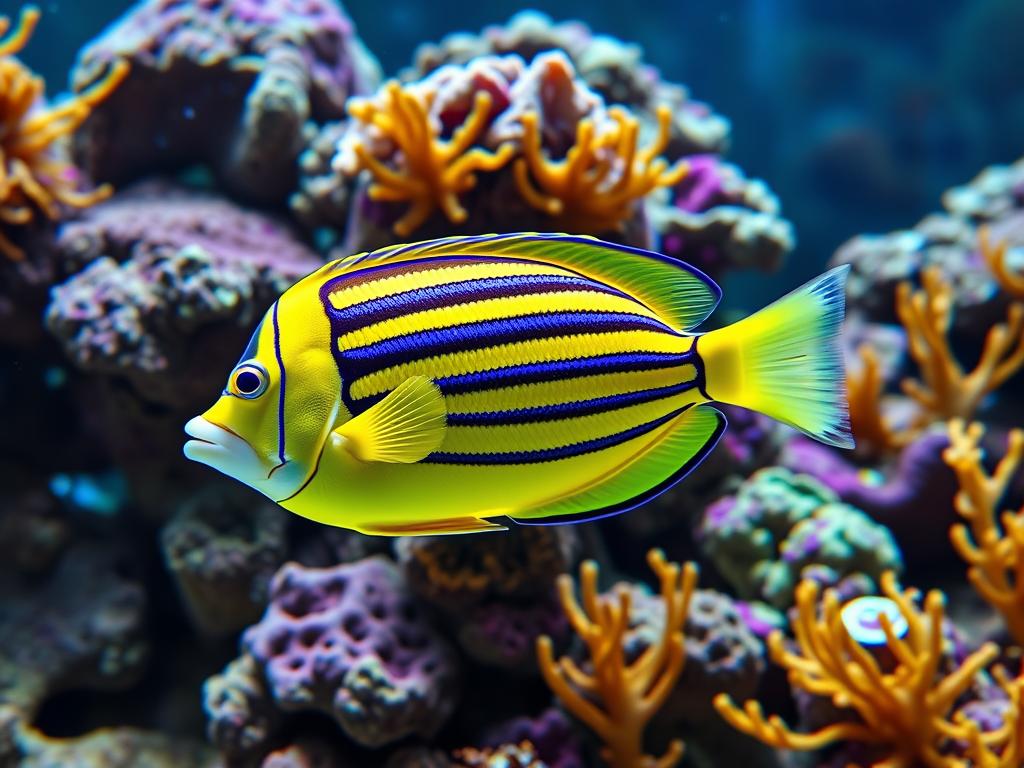
Essential Dietary Components
A balanced diet for captive striped surgeonfish should include:
- High-quality marine algae (nori, spirulina, chlorella)
- Specialized herbivore pellet foods with plant-based ingredients
- Frozen foods formulated for herbivorous marine fish
- Live rock with natural algae growth
- Occasional vegetable supplements (blanched spinach, lettuce, zucchini)
Recommended Feeding Schedule
Striped surgeonfish have high metabolic rates and should be fed multiple times daily:
- 2-3 small feedings throughout the day rather than one large meal
- Constant access to algae (either growing naturally or supplemented)
- Variety in diet to ensure complete nutrition
Water quality is particularly important for these fish, as they require clean, well-oxygenated water with stable parameters. Poor water quality can quickly affect their appetite and overall health.
Important: Avoid keeping striped surgeonfish with similarly shaped fish or those with similar diets, as their territorial nature can lead to aggression. Their razor-sharp caudal spines can cause serious injuries to tank mates.
5 Surprising Facts About Striped Surgeonfish Eating Habits
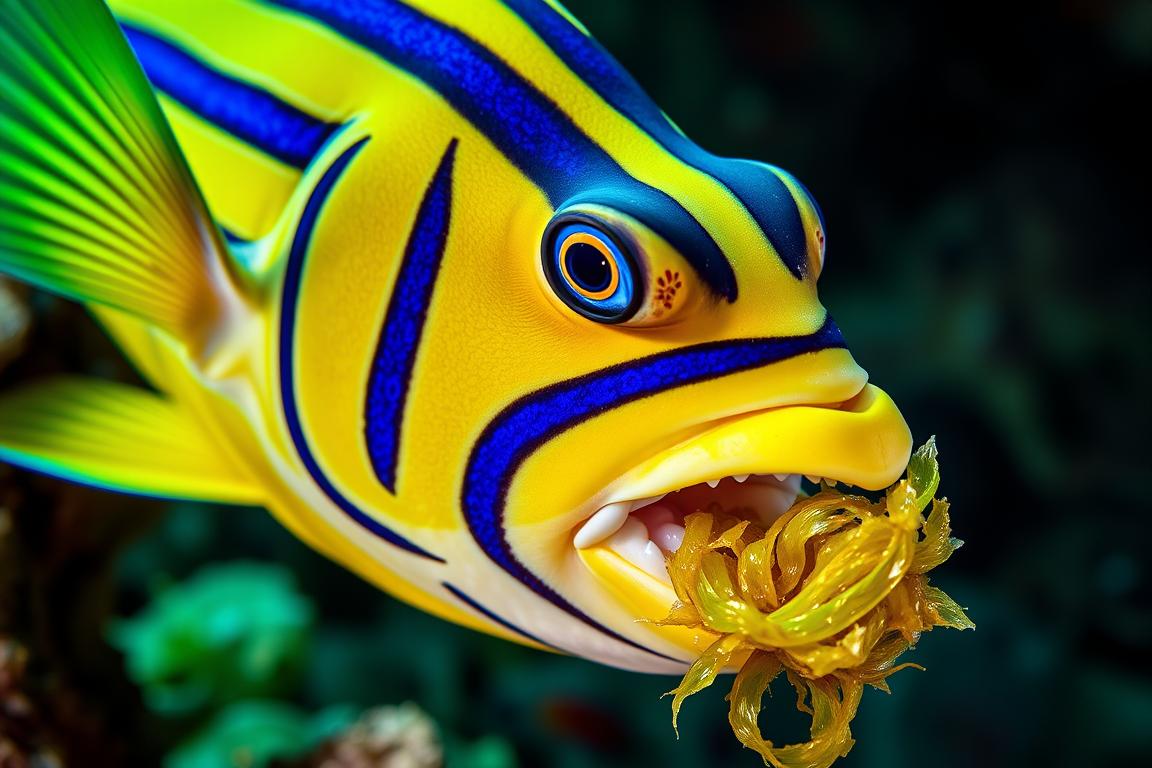
1. Selective Feeding Strategy
Despite being herbivores, striped surgeonfish are surprisingly selective eaters. They don’t simply consume any algae they encounter but make deliberate choices based on nutritional content and digestibility. They can identify and target specific algae species even when they’re growing in mixed communities.
2. Stomach as a Grinding Mill
Striped surgeonfish have evolved a thick-walled stomach that functions like a gizzard. When they ingest sand particles while grazing (which happens frequently), these particles help grind the tough algae cell walls, improving digestion and nutrient absorption—essentially using sand as natural “teeth” in their stomachs.
3. Territorial Food Theft
While fiercely territorial about their own feeding grounds, striped surgeonfish have been observed occasionally “stealing” food from neighboring territories when the opportunity arises. This opportunistic behavior shows their complex understanding of territorial boundaries and risk assessment.
4. Nighttime Color Changes
At night, when they’re not feeding, striped surgeonfish undergo a remarkable color change, becoming lighter in color. This adaptation is believed to make them more visible in the water column during non-feeding hours, possibly as a defense mechanism against nocturnal predators.
5. Feeding and Reproduction Connection
Striped surgeonfish temporarily abandon their feeding territories during spawning events, which typically occur around full moons. This represents a significant trade-off, as leaving their territory risks losing valuable food resources to competitors. Different populations have evolved different spawning times (morning vs. afternoon) to minimize this risk.
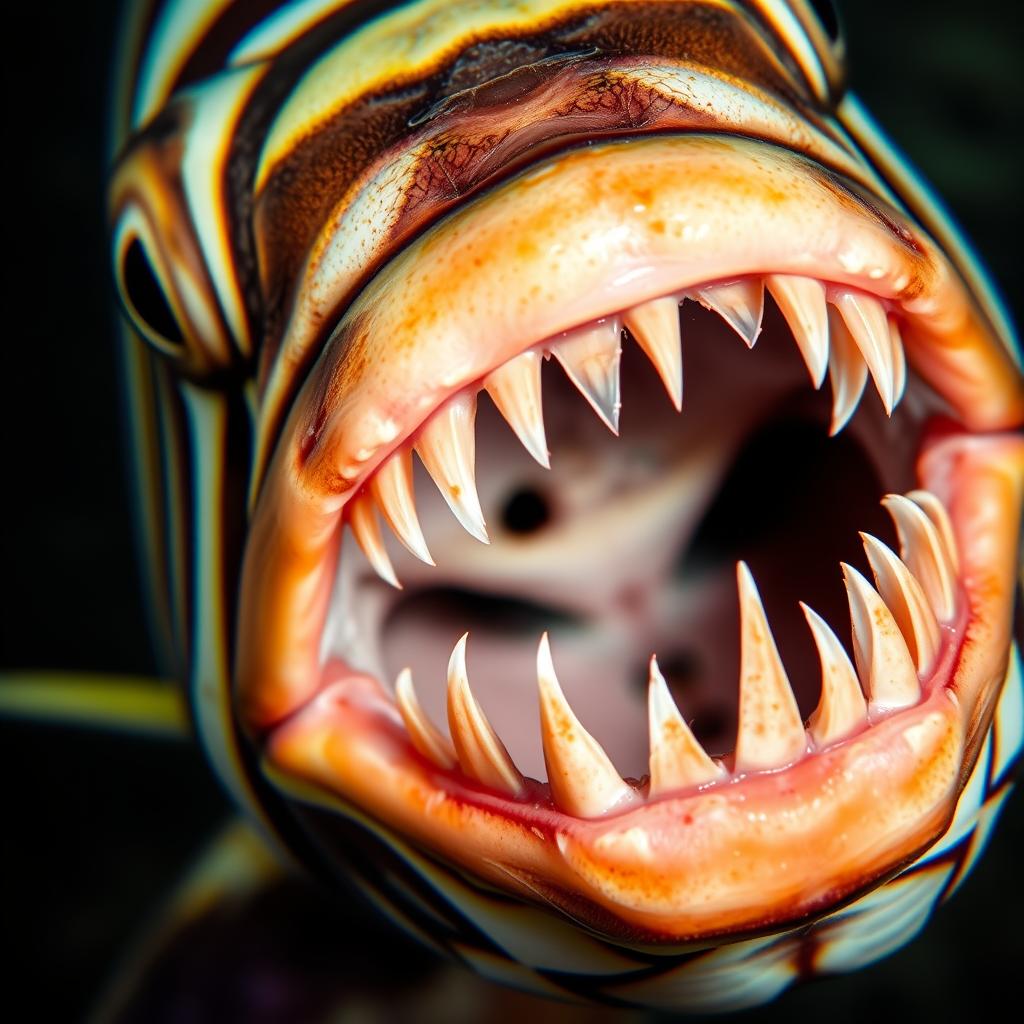
Frequently Asked Questions About Striped Surgeonfish Diet
Are striped surgeonfish completely herbivorous?
While striped surgeonfish eat primarily algae, they may occasionally consume small crustaceans and other tiny marine organisms that live within the algal mats they graze on. However, these animal proteins make up a very small percentage of their overall diet. Their digestive system is specifically adapted for processing plant material, with high levels of short-chained fatty acids and relatively low levels of protein amino acids.
How much do striped surgeonfish eat daily?
Striped surgeonfish spend approximately 80% of their day eating. An adult fish can take thousands of bites per day, constantly grazing on algae throughout daylight hours. This continuous feeding is necessary due to the relatively low nutritional content of algae compared to animal protein, requiring them to process large volumes to meet their energy needs.
Can striped surgeonfish eat commercial fish food?
In captivity, striped surgeonfish can accept high-quality commercial foods specifically formulated for marine herbivores. However, these should only supplement their primary diet of marine algae. Look for foods containing spirulina, seaweed extracts, and other plant-based ingredients. Avoid foods high in animal proteins, as these can cause digestive issues over time.
How does water temperature affect their feeding habits?
Striped surgeonfish prefer water temperatures between 22-28°C (72-82°F). When temperatures fall outside this range, their metabolism and feeding activity may decrease. In captivity, maintaining stable water temperatures within this range is crucial for encouraging normal feeding behavior and ensuring proper digestion of plant material.
Do juvenile striped surgeonfish eat differently than adults?
Yes, juvenile striped surgeonfish eat differently than adults. Young fish typically inhabit shallower pelagic waters and may consume more varied diets including softer algae varieties and occasionally zooplankton. As they mature and move to reef environments, they develop the more specialized herbivorous diet characteristic of adults, focusing primarily on filamentous algae growing on reef surfaces.
Essential Algae Supplements for Aquarium Surgeonfish
Providing proper nutrition for captive striped surgeonfish requires high-quality algae supplements. These specialized products help replicate their natural diet and maintain optimal health.
Conclusion: Understanding the Striped Surgeonfish Diet
The dietary habits of striped surgeonfish represent a fascinating example of evolutionary specialization. These vibrant reef dwellers have developed highly specific feeding behaviors and digestive adaptations that allow them to thrive on a diet primarily consisting of marine algae. Their role as herbivores is crucial for maintaining the delicate balance of coral reef ecosystems, preventing algal overgrowth that could threaten coral health.
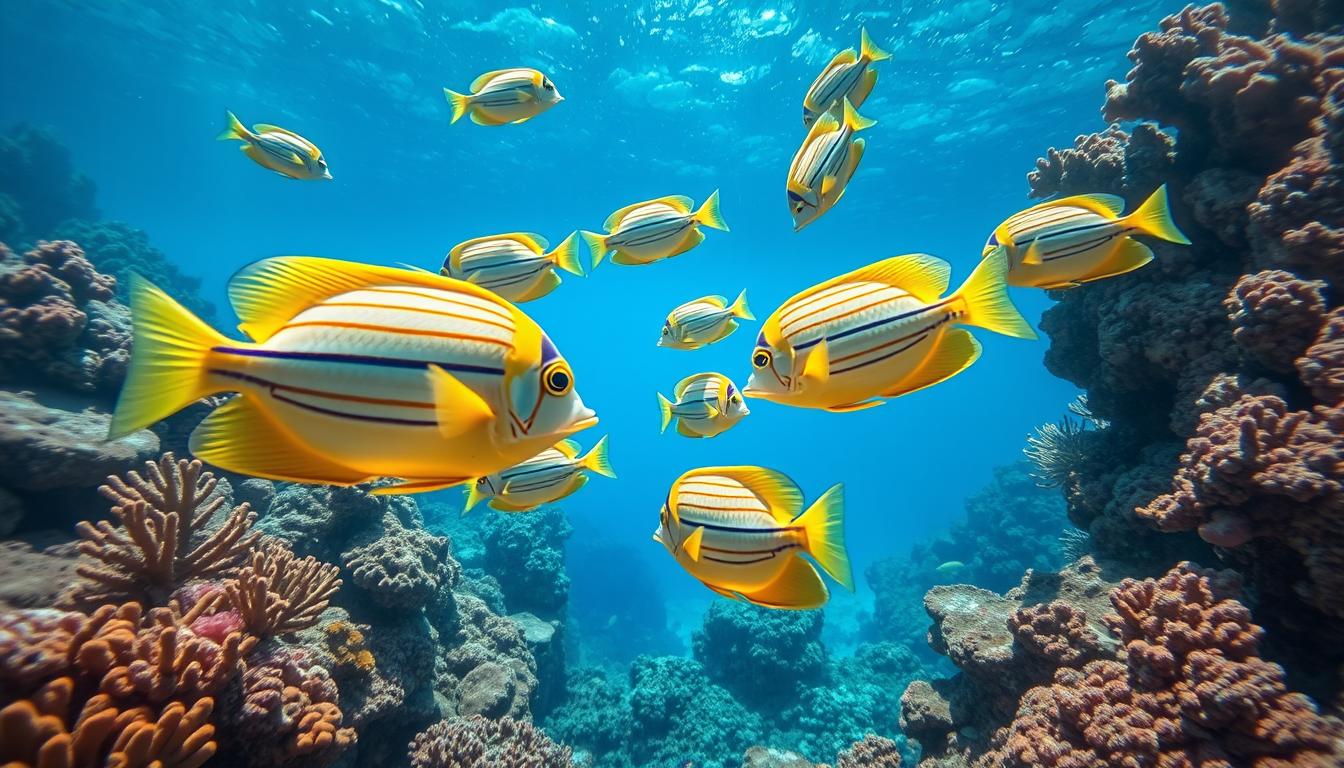
Whether observed in their natural habitat or kept in carefully maintained aquariums, striped surgeonfish demonstrate the remarkable adaptations that allow species to occupy specific ecological niches. Their selective feeding on various algae types, territorial behavior, and specialized digestive systems all contribute to their success as one of the most distinctive and important herbivores on Indo-Pacific coral reefs.
For aquarium enthusiasts, understanding and replicating the natural diet of striped surgeonfish is essential for maintaining these beautiful but demanding fish in captivity. By providing a varied diet rich in marine algae and maintaining appropriate water conditions, it’s possible to support their specialized nutritional needs and observe their fascinating feeding behaviors firsthand.
Want to Learn More About Coral Reef Fish?
Discover our complete guides to reef fish care, coral reef conservation, and sustainable marine aquarium practices.
